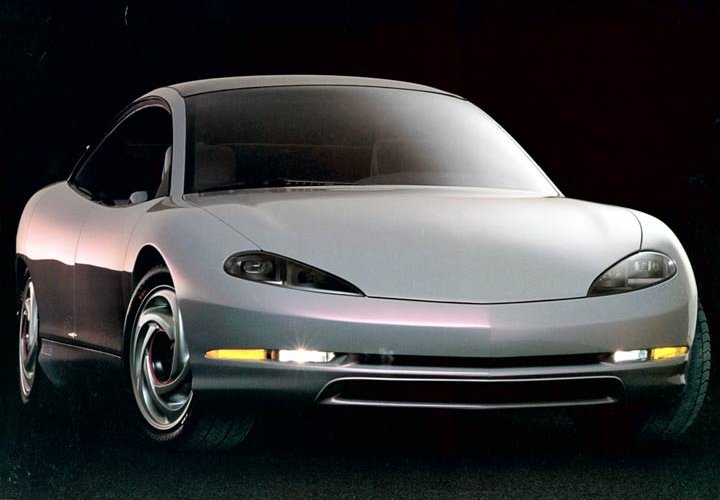The dawn of the 1990s marked a pivotal moment in automotive history. Major manufacturers were pushing boundaries of design and technology, but it was a specialized company that delivered one of the era’s most innovative concepts. The American Sunroof Company (ASC) stepped beyond their traditional role to present a vision that would challenge conventional automotive thinking.
This wasn’t just another concept car unveiling. The ASC Vision II emerged as a bold statement about the future of automotive design, featuring groundbreaking solutions that would influence the industry for decades to come. Its revolutionary approach to the sunroof system alone sparked a new dialogue about the relationship between passengers and their environment.
Revolutionary Design Language
The Vision II’s exterior broke free from the angular designs dominating the late 1980s. Its smooth, aerodynamic silhouette introduced a fresh aesthetic that prioritized both form and function. The standout feature — a circular rotating sunroof — wasn’t merely a technical showcase; it represented a fundamental rethinking of how drivers and passengers could interact with their vehicle’s environment.
Historical Reference!
The circular rotating sunroof concept was so ahead of its time that it took nearly two decades before similar designs started appearing in production vehicles. This innovation demonstrated ASC's ability to think beyond contemporary constraints.
«The Vision II wasn’t just about creating something different — it was about reimagining the entire concept of automotive comfort,» recalls James Anderson, former ASC design engineer. «We wanted to prove that radical innovation could coexist with practical functionality.»
The exterior design integrated seamlessly with the car’s technological ambitions. Every curve and contour served a purpose, from optimizing aerodynamics to showcasing the possibilities of new manufacturing techniques.
Technical Innovation Showcase
At the heart of Vision II’s innovation was its electrical systems architecture. The rotating sunroof mechanism, powered by a sophisticated electric motor system, demonstrated unprecedented precision and reliability for its time. This wasn’t just a mechanical achievement — it was a preview of the electronic integration that would become standard in modern vehicles.
Key technical innovations included:
- advanced electric motor control systems;
- integrated environmental sensors;
- automated comfort adjustment features;
- pioneering use of lightweight materials;
- modular design approach for easy maintenance.
Fact!
The Vision II's electronic control system used over 1,000 feet of wiring — more than twice the amount found in typical luxury cars of that era.
This technical sophistication extended beyond the signature sunroof. Vision II introduced several other innovations that would later become industry standards, particularly in the realm of electronic control systems and comfort features.
Cultural Impact and Legacy
The Vision II’s influence extended far beyond engineering circles. Its distinctive design captured the imagination of both automotive enthusiasts and the general public, leading to unexpected cultural ripples. The release of a commemorative leather jacket — the Reed Sportswear ASC25 Vision II — demonstrated how this concept car had transcended its automotive origins to become a lifestyle icon.
«The Vision II represented more than technological advancement — it became a symbol of optimism about the future of transportation,» notes automotive historian Sarah Chen. «Its influence can still be seen in concept cars today, particularly in how they balance innovation with practical application.»
The concept’s legacy lives on through its influence on modern automotive design and technology. Many of its innovations, once considered radical, have evolved into standard features in contemporary vehicles.
Progress Through Vision
The early 1990s marked a crucial transition period in automotive design, and the Vision II served as a bridge between eras. Its integration of electronic systems with mechanical innovation set a precedent for how future vehicles would be developed.
Notice!
The Vision II's modular design approach influenced how manufacturers would later approach vehicle development, making maintenance and upgrades more accessible.
Modern automakers continue to reference the Vision II when discussing innovative approaches to automotive design. Its influence is particularly evident in the current trend toward incorporating smart glass and configurable roof systems in luxury vehicles.
Tomorrow’s Legacy, Today’s Inspiration
Looking back at the ASC Vision II from our current vantage point reveals how prescient its design philosophy was. While some of its features might seem familiar now, they represented radical thinking in 1990. The concept’s emphasis on user experience and environmental awareness presaged concerns that would become central to automotive design decades later.
The true genius of the Vision II wasn’t just in its technical innovations, but in how it challenged the industry to think differently about the future of transportation. Its legacy continues to inspire designers and engineers to push boundaries and question conventional wisdom.
Pros and Cons
| Advantages | Disadvantages |
|---|---|
| Revolutionary rotating sunroof design showcasing technical innovation | Limited practical application in immediate production vehicles |
| Advanced electronic control systems ahead of their time | High complexity of systems for 1990s maintenance capabilities |
| Influential aerodynamic design language | Cost-prohibitive features for mass production |
| Pioneering use of lightweight materials | Some innovations required significant technological advancement to become practical |
| Strong cultural impact beyond automotive sector | Limited availability of replacement parts for demonstration models |
| Modular design approach influencing future maintenance concepts | Complex electrical system requiring specialized knowledge |
| Lasting influence on modern automotive design | Initial reliability challenges with prototype systems |
The ASC Vision II Concept represents a crucial moment in automotive history where imagination met innovation. While some of its features proved too ambitious for immediate implementation, its influence on design philosophy and technical approach has been undeniable. The concept’s legacy lives on in modern vehicles’ increasingly sophisticated integration of technology and user experience, proving that sometimes the most valuable aspect of a concept car isn’t its immediate practicality, but its ability to expand our vision of what’s possible.

